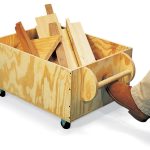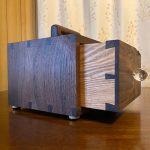We may receive a commission when you use our affiliate links. However, this does not impact our recommendations.
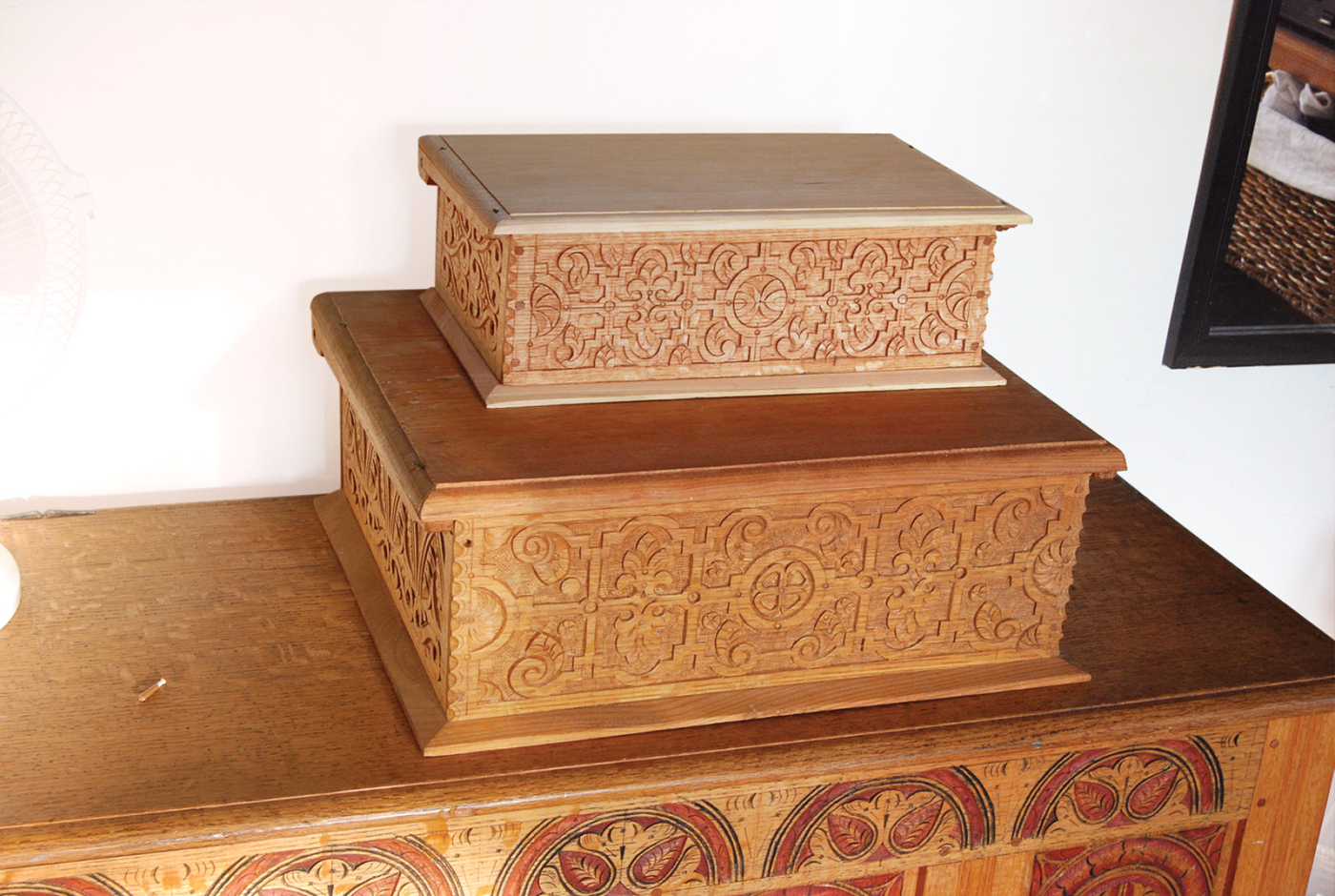
Contrived. Just to show how awful it looks to display a box-on-a-box-on-a-chest, I shot this photo. I then immediately rearranged things to a more tasteful order.
In some contemporary households, 17th-century style storage prevails.
I once sold a chair to a woman who later told me how much she loved it. “I never let anyone sit in it!” she exclaimed, apparently to show me how special it was to her.
I told her that was about the worst thing she could say to me.
In my home we use our furniture hard. Stuff the chests ’til they just barely shut – that’s our motto. That’s where we store our off-season stuff. Our old house has only one proper closet, so we rely on the chests to do their duty. You can fit an extraordinary amount of clothing in these chests.
But another feature, sometimes a curse, of a good joined chest is that the lid is a large expanse of flat space. If it’s an oak lid, it’s a large, hard-wearing flat space. That means it collects things sitting on its lid. The one shown (below with stuff all over it) is 54″ x 21″. A kid can fit a lot of Legos on that kind of platform. I also usually always store a large box on top of a chest. I avoid putting a small box on top of that – there’s a limit even for me. I have seen antiques dealers display them that way. Ugh.
One thing I really want to know is how these objects were used originally. To do that, we need to get a look into the houses of those who lived in the period – and who doesn’t like snooping around in people’s houses?
Early on, I was taught about the wonders of probate inventories. These are records made of a person’s “chattels” at the time of their death. In the 17th century, these inventories could sometimes be quite detailed, other times rather sparse. The best type of probate inventory is a “room-by-room” inventory. In this example, the appraisers went from one room to the next and listed the goods found in each. In my early research, I pulled out just the furniture or tools. The values are listed in old English currency, 12 pence (d) to a shilling (s), 20 shillings to a pound (£).
Period Inventories
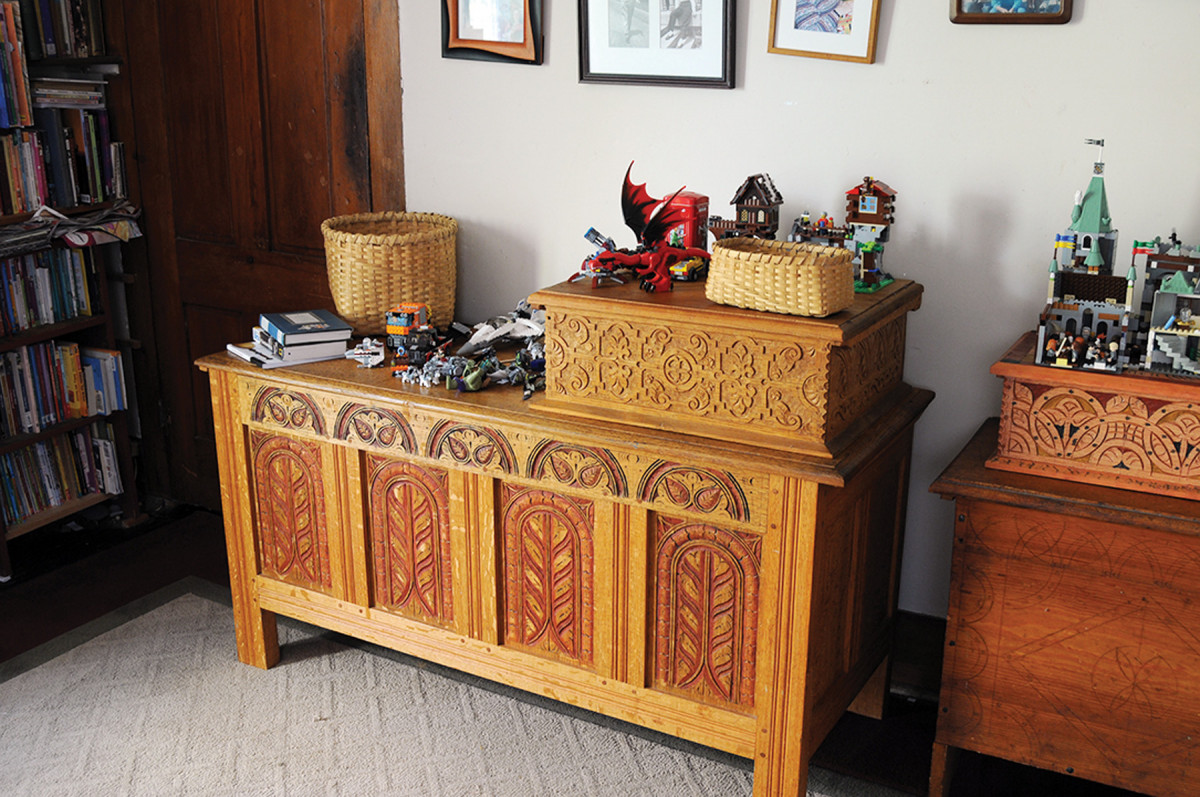
Meant for use. The lids of my furniture pieces serve many purposes…all of which involve piling stuff on them.
Joan Harris died in Essex, England, in 1638:
■ In the hall: One table one forme & one stoole 9s; 3 chayres 1s6d; one cubbord 9s; 2 bench boards and other implements 1s
■ In the parlor: One joyned bedsteddle… one cubbord, one chest 17s; one joyned chest, one wicher chaire 9s;
■ In the chamber over the parlor: one joyned chest, 2 boorded chests, one box £1.
Simple. A two-room house, with “chambers” above each.
One flaw in my early research is that I didn’t copy the whole inventory. This example tells us what furniture Harris had, but nothing of its context.
Charity Blages, widow of Richard Blages, “a gentleman,” died in Devon, England, in 1628: Among her many possessions were “A truncke a presse two Chestes with other smale Coffers” worth 50 shillings.
Being all lumped together like that makes it impossible to learn any distinction about these pieces. But the next listings were “Shetes table Cloathes & other naperye” valued at £5. Then came “Fether bedes Ruges Coverlettes Pyllowes bolsters and blanckettes” appraised at £15. And last in this listing was “Her wearing apparell” at £l3 6s 8d.
All of these textiles coming right on the heels of a cluster of case furniture leads us to assume they were stored in the furniture.
You see patterns like this in period inventories frequently. Keep in mind that we’re talking about houses without closets, so the chests were the primary place to store textiles. It always pains me to say it, but the contents of the chests were more valuable than the chests themselves. Textiles, both clothing and linens for the table, were the work of many hands, whereas woodwork often was the work of one individual, at most maybe two men.
My (Imaginary) Inventory
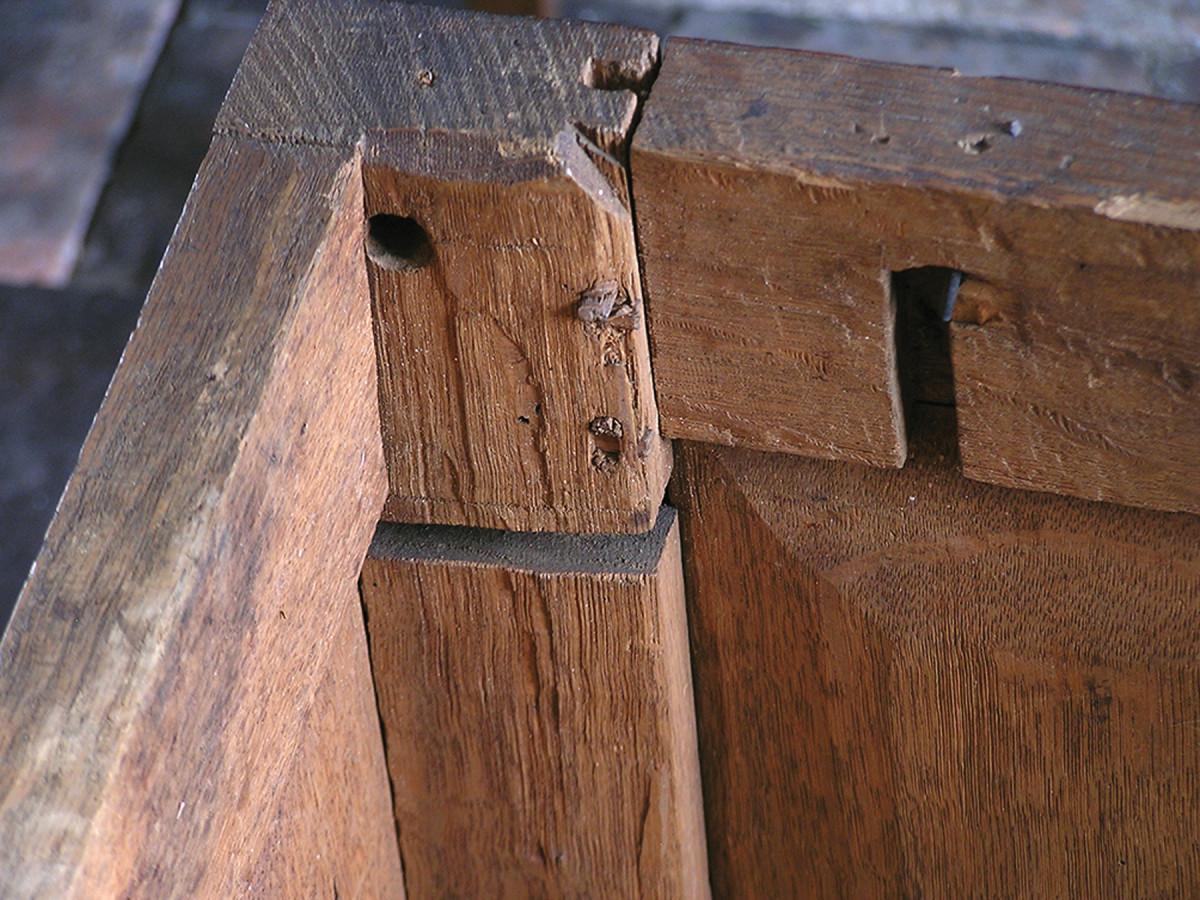
Once upon a time. This 17th-century chest from New England had a till, but no more. All that remains are the notches for the till’s side and bottom, and the mortise for the lid’s hinge.
I’ve never done it, but I often think about what an inventory of my house would look like.
In the living room: one joined chest carved and painted, one board chest, one chest of drawers and four carved boxes. There’s some typical contents and some non-traditional examples. Part of it might read, “One large carved box, with scarfs, mittens, hats, one small carved ditto with candles, batteries and phone chargers.”
Twice a year, maybe three times, we make plans to “go into (this or) that chest.” It’s quite an ordeal. You have to clear off the top, which means the stuff piled there has to go somewhere. If you don’t plan well, that somewhere is the floor, which then makes it hard to get around. Best be prepared and find a spot for that stuff.
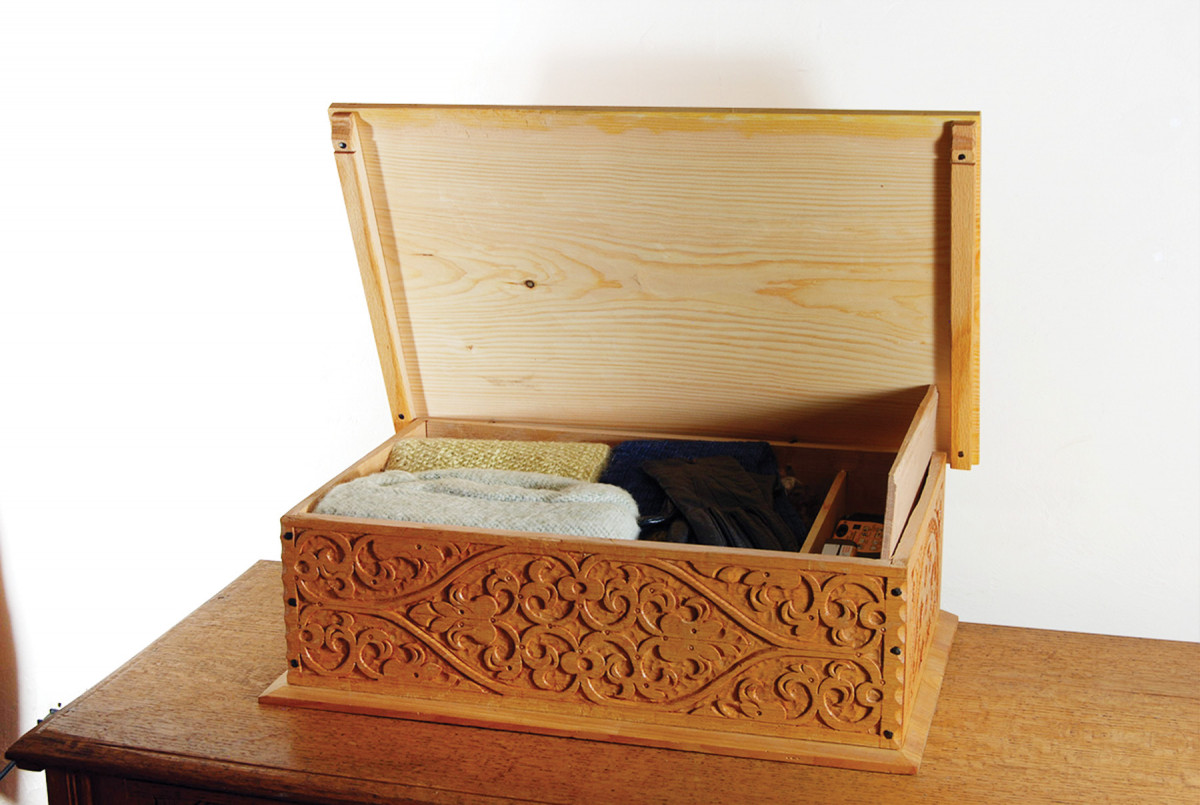
If it fits…. Much of our furniture still functions as it did traditionally. This large box stores woolens in the main section, and small household items in the till.
When you open the chest lid, you can prop it up by swinging the till lid open, and leaning the chest lid on it.
It beats holding it open with your head – until the till breaks. Often on old chests, all that remains are the notches that indicate there was a till.
Then you pull out the upcoming clothing, and stash the outgoing. There’s always detours; you stumble on things forgotten (“I didn’t remember these photos were in here!”). That can lose you some hours, so it’s best to do this when you don’t have to be somewhere.
We once had a cat that would jump into the chest anytime we opened it. Whatever did happen to that cat?
Here are some supplies and tools we find essential in our everyday work around the shop. We may receive a commission from sales referred by our links; however, we have carefully selected these products for their usefulness and quality.








